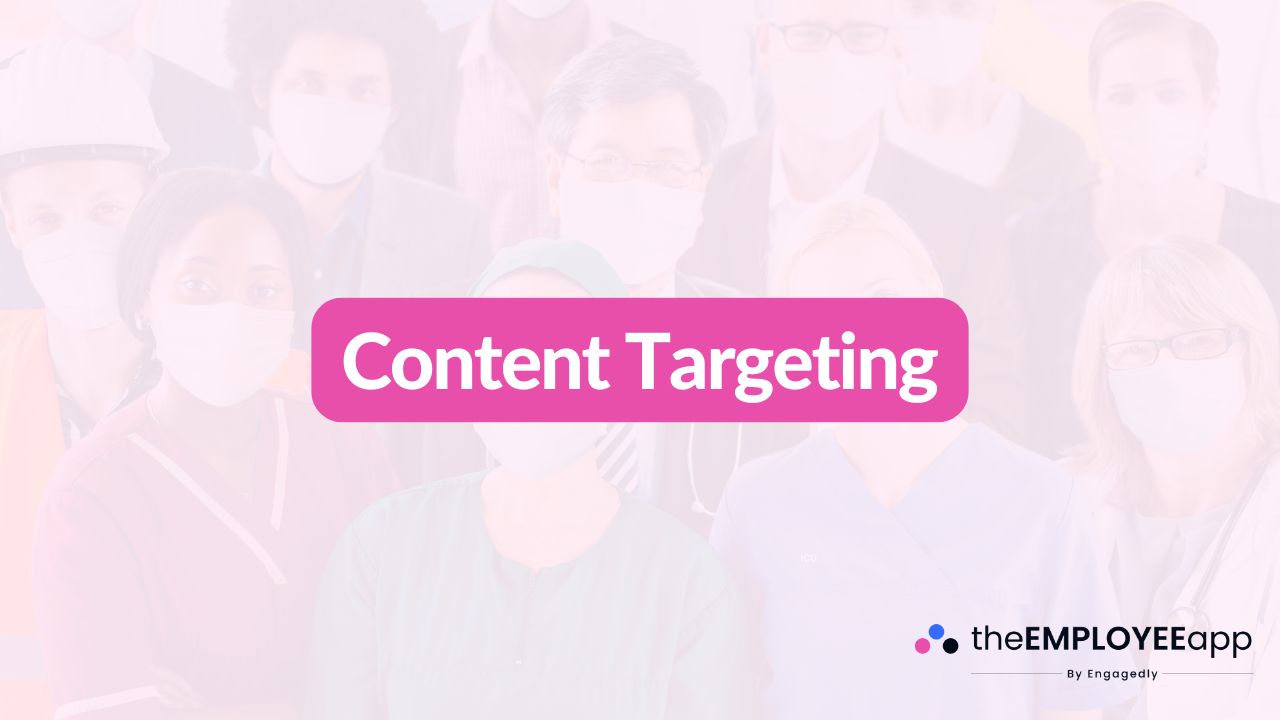
Content Targeting
Content targeting is the practice of delivering specific messages, updates, or resources to defined groups of people based on factors such as role, department, location, or behavior. Instead of sending the same message to everyone, organizations use targeting to ensure that communication is relevant, personalized, and timely. This approach increases engagement, reduces information overload, and makes content more meaningful to each audience.
Why Content Targeting Matters
In today’s digital workplace, employees and customers alike are bombarded with constant messages. When communication is generic or irrelevant, people quickly disengage. Content targeting addresses this challenge by filtering and segmenting audiences so that they only receive information that applies to them. For employees, this could mean receiving updates that align with their department, shift schedule, or work location. For customers, it could involve seeing content tailored to their preferences or past behavior. Targeting strengthens trust, reduces noise, and ensures that important information isn’t lost in the clutter.
How Content Targeting Works
Content targeting typically relies on user data, preferences, or group identifiers. Within internal communication platforms, administrators can categorize employees into groups based on criteria such as job title, team, location, or level of seniority. Messages can then be crafted and scheduled for those groups specifically. For example, a company may send safety guidelines only to frontline staff, HR updates to managers, and strategic vision messages to executives. By aligning communication with audience needs, targeting makes each message more impactful.
Benefits of Content Targeting
Relevance: Employees receive messages that directly affect their roles and responsibilities.
Improved engagement: People are more likely to read and act on messages that matter to them.
Efficiency: Saves time for both senders and receivers by cutting down unnecessary communication.
Reduced information overload: Employees aren’t overwhelmed with irrelevant updates.
Stronger alignment: Ensures each group gets the right information at the right time.
Better decision-making: Leaders and teams act faster when communication is clear and targeted.
Examples of Content Targeting in Action
Department-specific updates: Finance receives tax-related updates, while IT receives cybersecurity alerts.
Location-based communication: Employees at one branch receive facility updates that don’t apply to other locations.
Role-based targeting: Managers get leadership guidance while frontline employees receive daily operational updates.
Shift-specific messages: Notifications can be targeted so night-shift employees receive reminders different from day-shift workers.
Campaign-based segmentation: Learning and development programs can be promoted to employees most in need of specific skills.
These examples highlight how organizations use targeting to streamline communication while respecting the different needs of their workforce.
Best Practices for Content Targeting
Define clear groups: Start by segmenting audiences into meaningful categories such as role, location, or interest.
Prioritize clarity: Even when targeted, content should remain concise and easy to understand.
Avoid over-targeting: Too many small groups can make managing content complex. Focus on meaningful segments.
Test and adjust: Monitor engagement to see if targeted messages are resonating and adjust accordingly.
Balance personalization and inclusivity: Ensure that while messages are tailored, they don’t create information silos that leave others uninformed.
The Role of Content Targeting in Employee Communication
While content targeting is common in marketing, its role in internal communications is just as valuable. Deskless and frontline workers, for instance, often miss critical updates because generic communication channels don’t reach them effectively. With targeting, organizations can deliver important updates directly to their devices, ensuring no one is left out. Similarly, leadership teams can ensure sensitive or strategic messages reach the right audience without distracting other groups.
The Future of Content Targeting
Content targeting is becoming more intelligent with the integration of automation and AI. Instead of manually selecting audiences, platforms can now recommend who should receive certain messages based on patterns of engagement or behavioral data. The future will likely bring more adaptive targeting that not only segments audiences but also personalizes the timing and format of communication for maximum impact.
Conclusion
Content targeting is an essential strategy for delivering relevant, meaningful, and timely communication. By focusing on the right message for the right audience, organizations can boost engagement, reduce noise, and strengthen alignment across the workforce. Whether for internal updates, campaigns, or daily operations, content targeting ensures that every piece of communication has purpose and impact.
